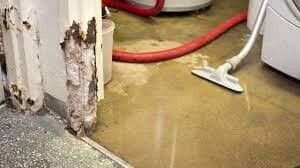Sewage Spill: Causes, Dangers, and Recommended Cleanup Procedures in the US

A sewage spill can have serious consequences for both human health and the environment. It’s important to understand the causes, potential dangers, and recommended cleanup procedures to mitigate the impact of such incidents.
Causes of Sewage Spills
Sewage spills can occur due to various reasons, including:

- Blockages in the sewer lines
- Overflow of wastewater treatment plants
- Improper maintenance of septic systems
- Heavy rainfall or flooding
- Accidental damage to sewer pipes
These causes can result in sewage backups and spills, leading to the release of untreated or partially treated human waste into the environment.
Dangers of Sewage Spills
Sewage spills pose significant risks to human health and the environment. Some of the potential dangers include:
- Spread of diseases: Sewage contains harmful pathogens such as bacteria, viruses, and parasites that can cause various illnesses, including gastrointestinal infections, skin infections, and respiratory problems.
- Contamination of water sources: Sewage spills can contaminate water bodies, such as rivers, lakes, and groundwater, leading to pollution and potential harm to aquatic ecosystems and drinking water supplies.
- Bad odors and unpleasant environment: Sewage spills release foul-smelling gases, creating an unpleasant and potentially hazardous environment for those in the vicinity.
- Property damage: Sewage backups can cause significant damage to homes, businesses, and infrastructure, resulting in costly repairs and restoration.

Recommended Cleanup Procedures
Proper and prompt cleanup is crucial to minimize the risks associated with a sewage spill. Here are some recommended procedures:
- Ensure personal safety: It’s essential to wear protective gear, such as gloves, boots, and masks, while dealing with sewage spills to avoid direct contact with the contaminated waste.
- Containment: Take immediate measures to contain the spilled sewage to prevent further spread and contamination. Use barriers, absorbent materials, and sandbags to create a physical barrier.
- Remove standing water: Use pumps or wet vacuums to remove standing water from the affected area.
- Clean and disinfect: Thoroughly clean and disinfect all surfaces, objects, and materials that came into contact with the sewage. Use appropriate disinfectants recommended for sewage cleanup.
- Proper waste disposal: Dispose of all contaminated materials, including absorbents, gloves, and other protective gear, in sealed bags or containers according to local regulations.
- Professional assistance: In the case of significant sewage spills or if you are unsure about the cleanup process, it’s best to seek the assistance of professionals experienced in sewage cleanup and remediation.
By following these recommended cleanup procedures, you can help minimize the potential risks and ensure the safe restoration of the affected area.
What are the potential dangers of a sewage spill?
What should I do in case of a sewage spill?
For professional sewage backup remediation and cleanup services in the US, contact Water Damage Restoration Pros of Las Vegas at 725-210-8500.


